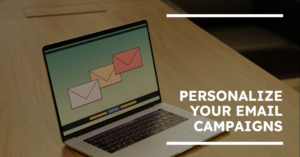Introduction:
Email marketing remains a cornerstone of digital strategy, offering brands a direct and effective way to engage with their audience, nurture relationships, and drive conversions. However, one-size-fits-all email campaigns are no longer sufficient to meet the diverse needs and preferences of today’s consumers. Enter email list segmentation – a powerful strategy that allows brands to divide their email list into targeted segments based on specific criteria, enabling personalized and relevant communication. In this guide, we’ll explore effective strategies for email list segmentation that maximize engagement, conversion, and ROI.

1. Define Segmentation Criteria:
Begin by defining the criteria for segmenting your email list based on relevant factors such as demographics, behavior, purchase history, interests, preferences, engagement level, and lifecycle stage. Consider what information is available about your subscribers and how it can be used to create meaningful segments that align with your marketing objectives and audience segmentation goals.
2. Segment Based on Demographics:
Demographic segmentation involves dividing your email list based on demographic attributes such as age, gender, location, income, occupation, and marital status. This type of segmentation allows you to tailor your messaging and offers to specific demographic groups, ensuring relevance and resonance with each segment.
3. Segment Based on Behavior:
Behavioral segmentation involves segmenting your email list based on subscribers’ past interactions and behaviors, such as website visits, email opens, clicks, purchases, cart abandonment, and engagement with specific content or offers. By understanding how subscribers engage with your brand, you can deliver targeted content and offers that address their interests and preferences.
4. Segment Based on Preferences:
Preference segmentation involves segmenting your email list based on subscribers’ stated preferences, interests, or subscription preferences. Offer subscribers the option to self-segment by choosing their areas of interest or subscribing to specific email lists or newsletters. Use this information to deliver personalized content that aligns with subscribers’ preferences and keeps them engaged.
5. Segment Based on Purchase History:
Segmenting your email list based on purchase history allows you to target subscribers with relevant product recommendations, cross-sell or upsell opportunities, replenishment reminders, loyalty rewards, or exclusive offers based on their past purchase behavior. Leverage purchase data to tailor your messaging and promotions to each segment’s buying habits and preferences.
6. Segment Based on Engagement Level:
Engagement segmentation involves segmenting your email list based on subscribers’ level of engagement with your emails, such as open rates, click-through rates, and frequency of interactions. Identify your most engaged subscribers and reward them with exclusive content, VIP offers, or early access to new products or promotions. For less engaged subscribers, re-engage them with targeted reactivation campaigns or win-back offers to reignite their interest in your brand.
7. Test and Iterate:
Continuously test and iterate your email segmentation strategy to optimize performance and maximize results. Monitor key metrics such as open rates, click-through rates, conversion rates, and revenue generated from each segment to identify opportunities for improvement. Experiment with different segmentation criteria, messaging strategies, and offers to find the optimal combination that drives engagement, conversion, and ROI.
Conclusion:
Effective email list segmentation is essential for delivering personalized and relevant content that resonates with your audience and drives meaningful interactions and conversions. By defining segmentation criteria, segmenting based on demographics, behavior, preferences, and purchase history, targeting based on engagement level, and continuously testing and iterating your segmentation strategy, you can create targeted and effective email campaigns that engage subscribers, nurture relationships, and drive results.



